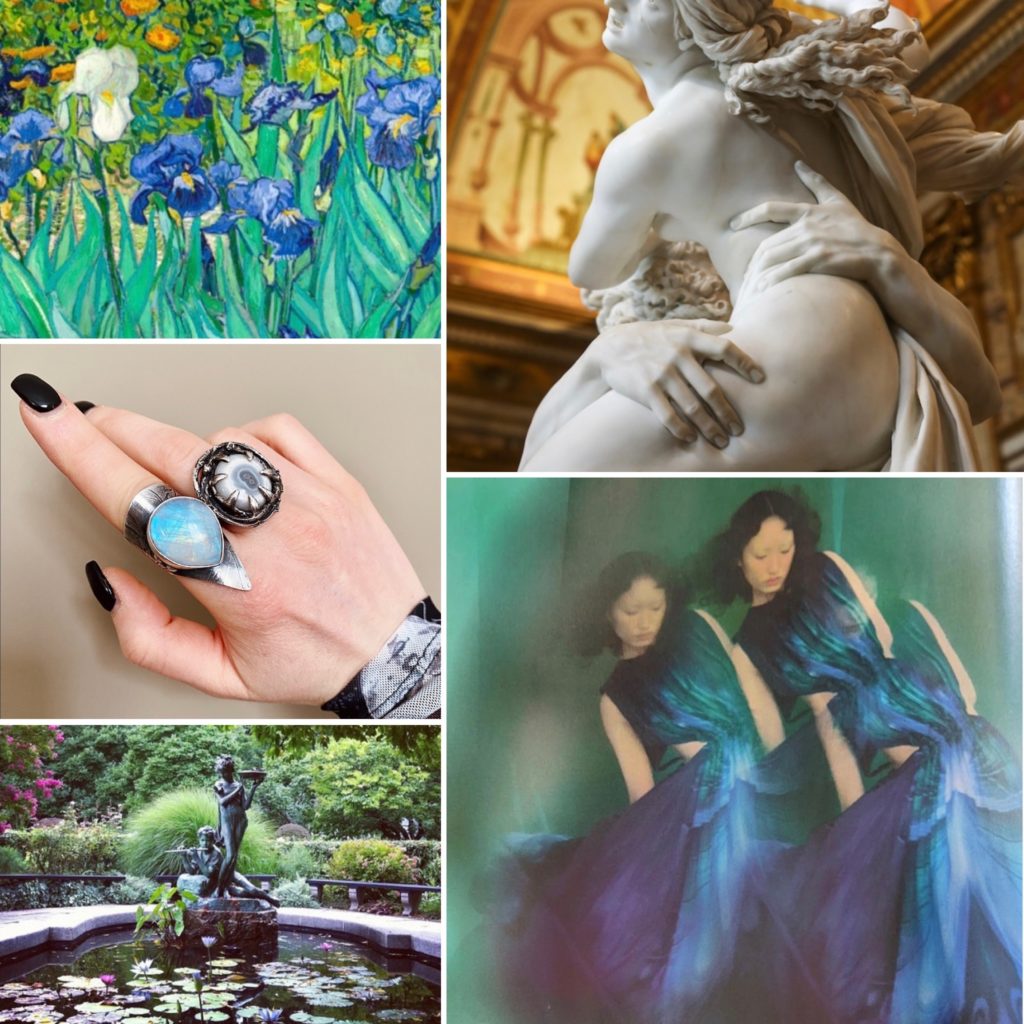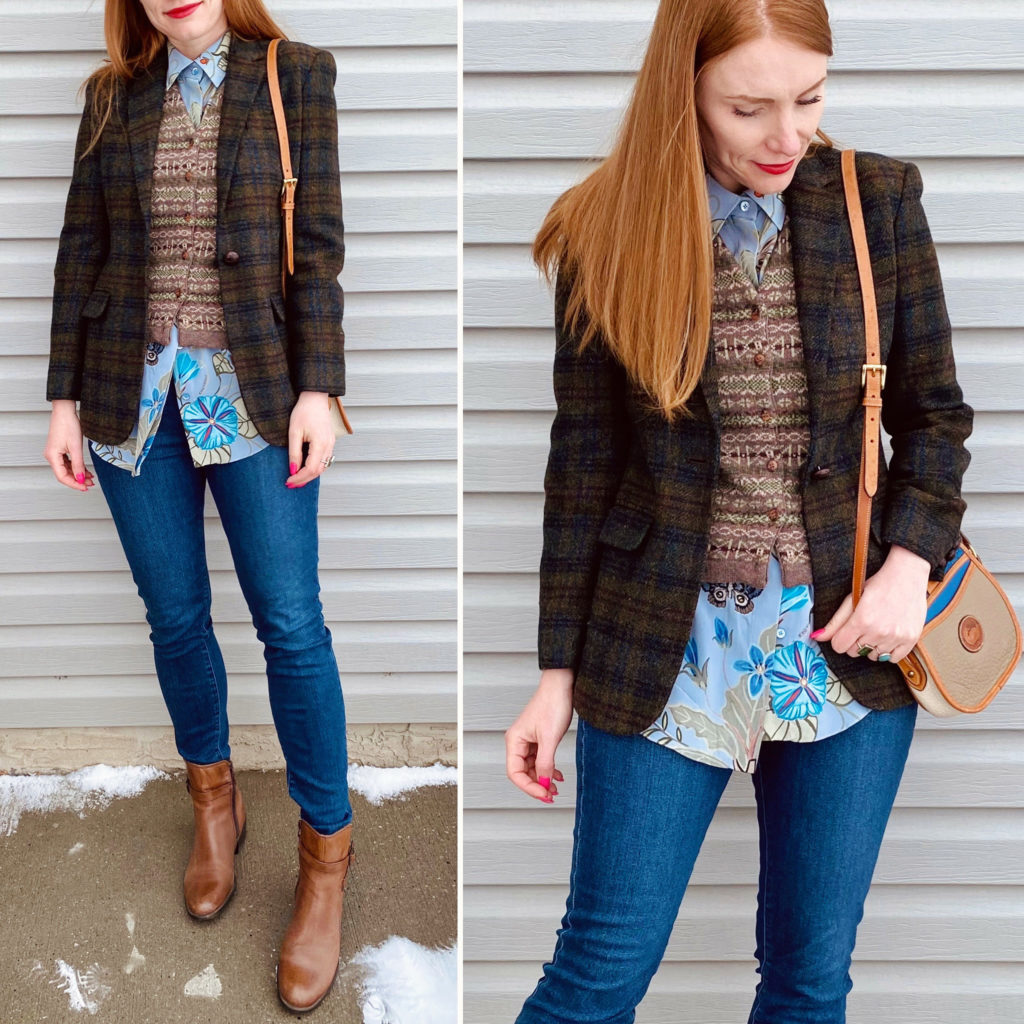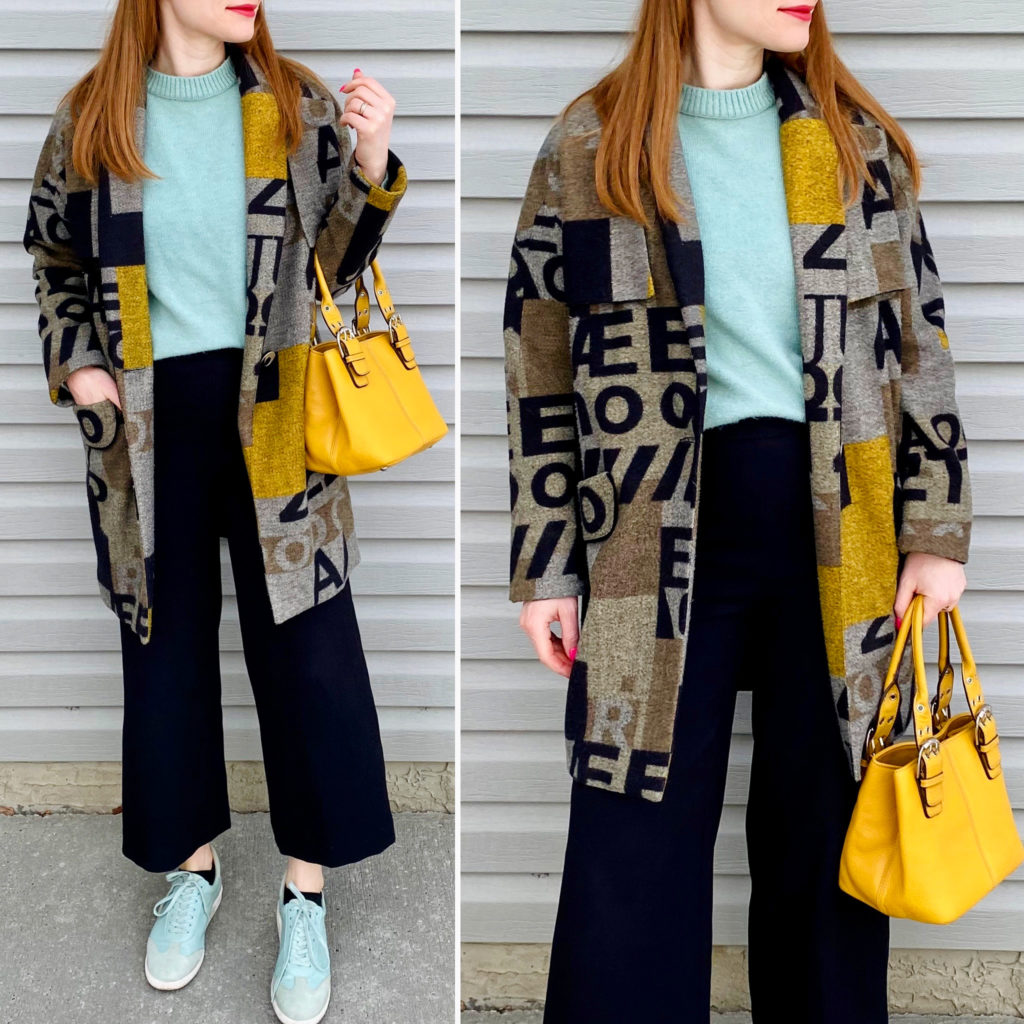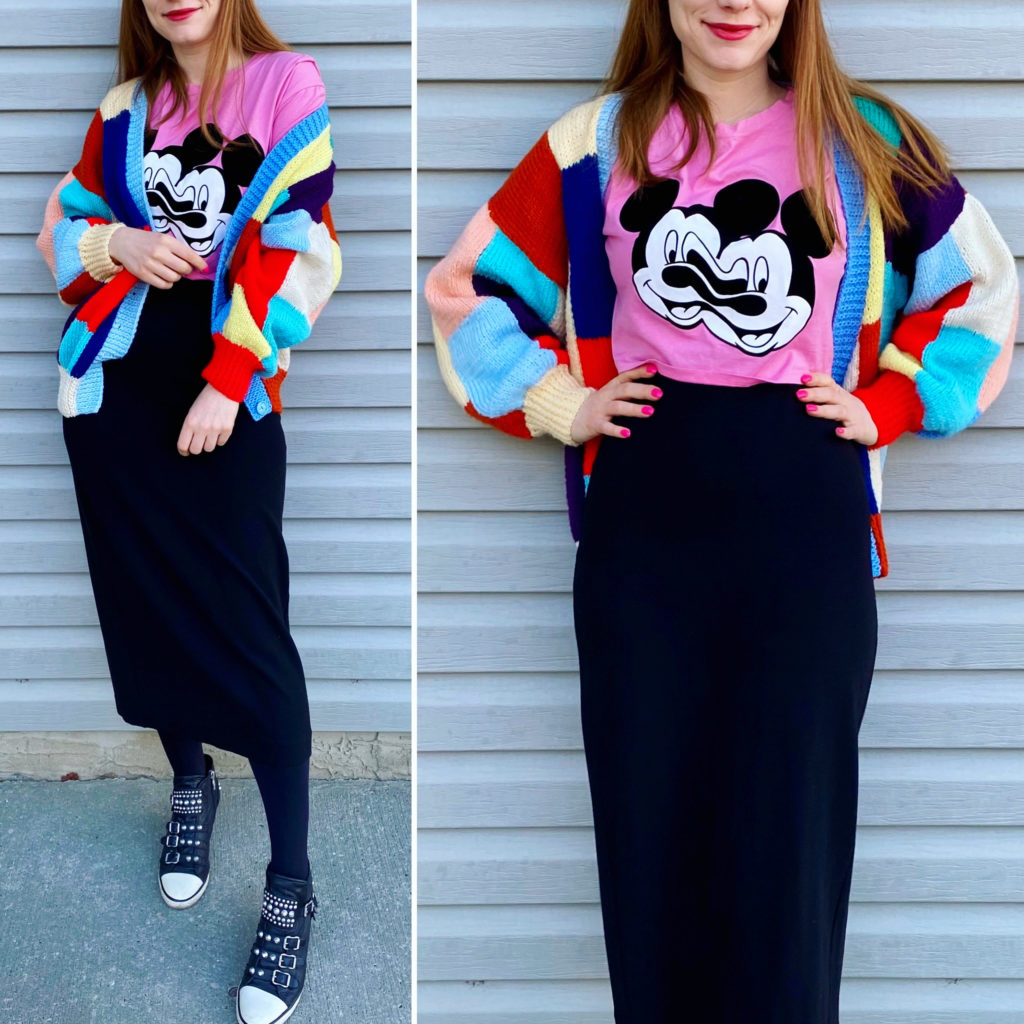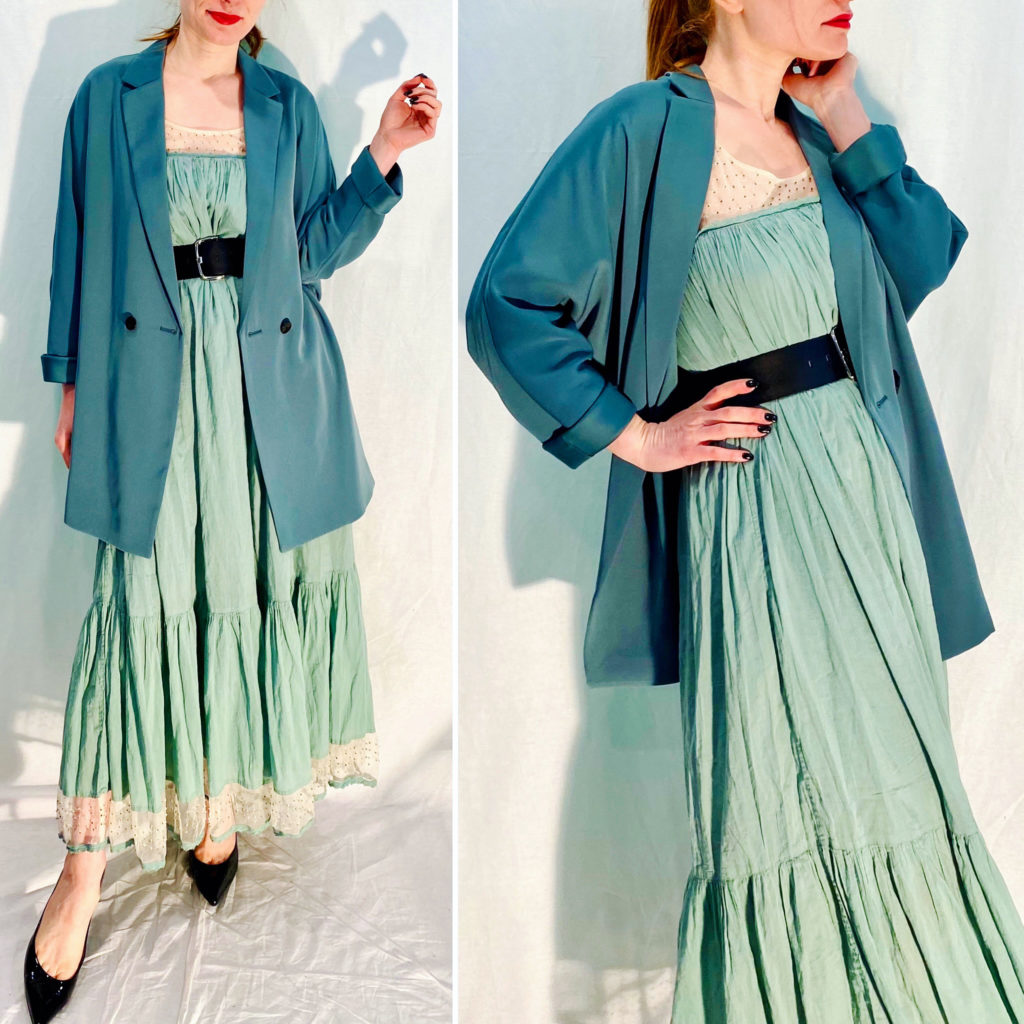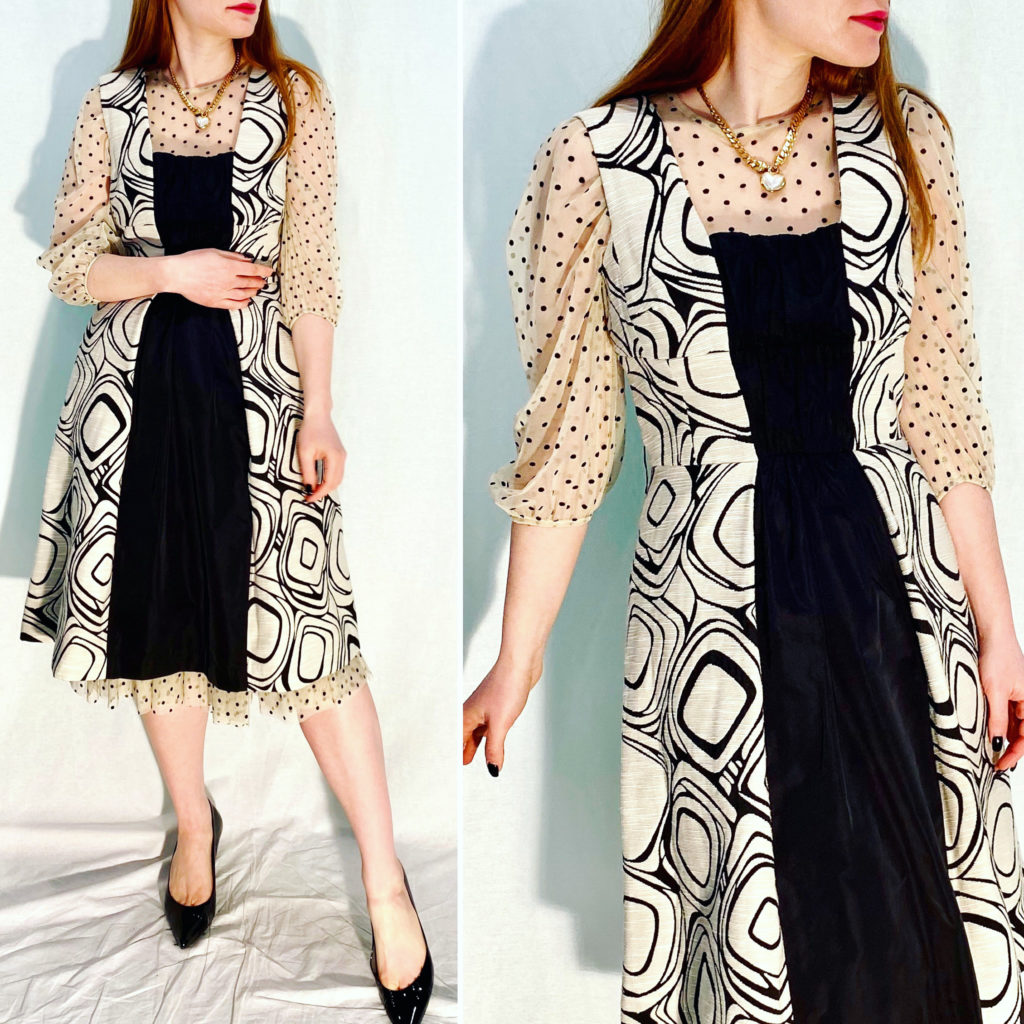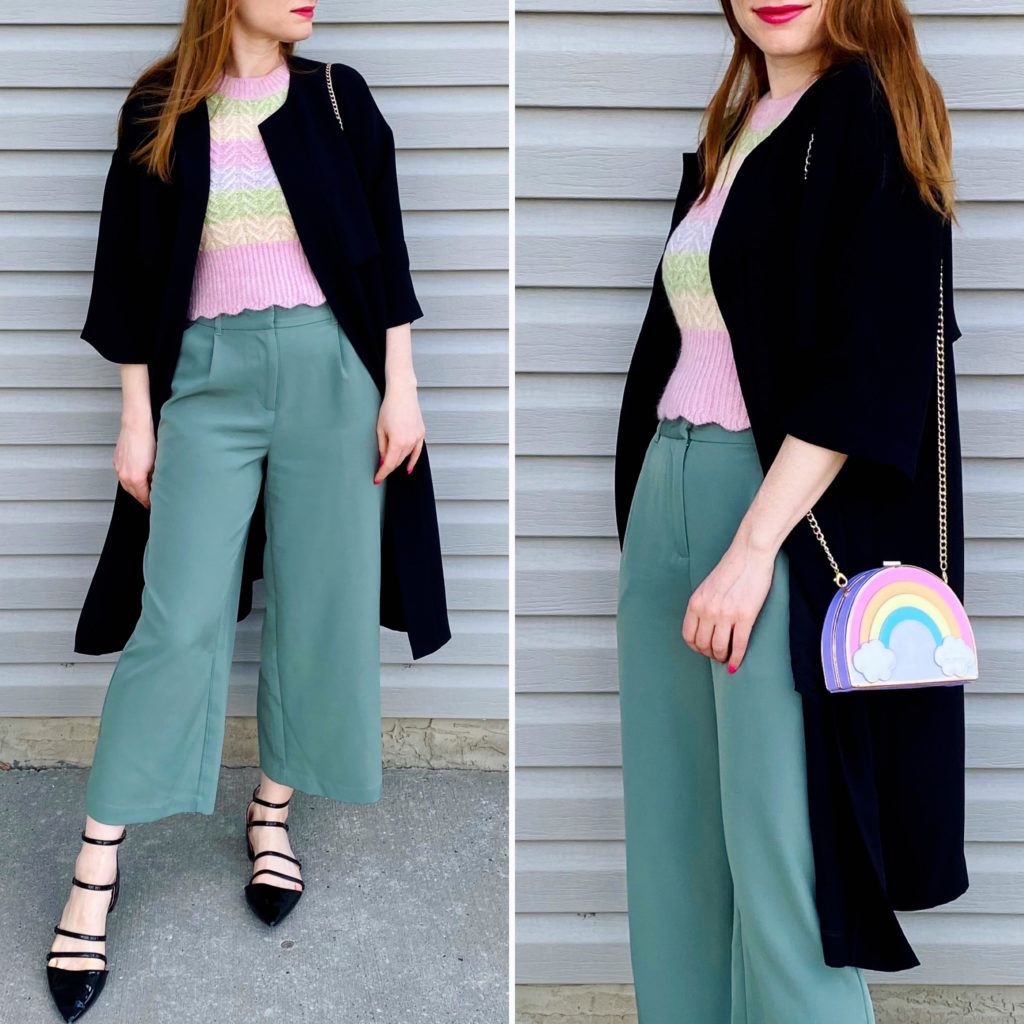
Details: Zara vest (Poshmark), Noul coat (thrifted), Vero Moda pants (thrifted), Stoney Clover x Target bag (retail)
Thoughts: My friend Lucy posted a photo of this bag a few weeks ago and I immediately fell in love with it. I mean, a rainbow bag? C’est moi. Because it’s a Target collab, I knew my chances of getting it (as a Canadian) were slim unless I fancied paying scalpers’ prices for it. [I don’t.] But it was meant to be! My boss (and friend) happened to be visiting California at *just* the right time, and she managed to snag me one right before they sold out. I was over the rainbow! I don’t care if this is a bag “meant for a child” (thanks, Reddit!) — my inner child is very happy with it.
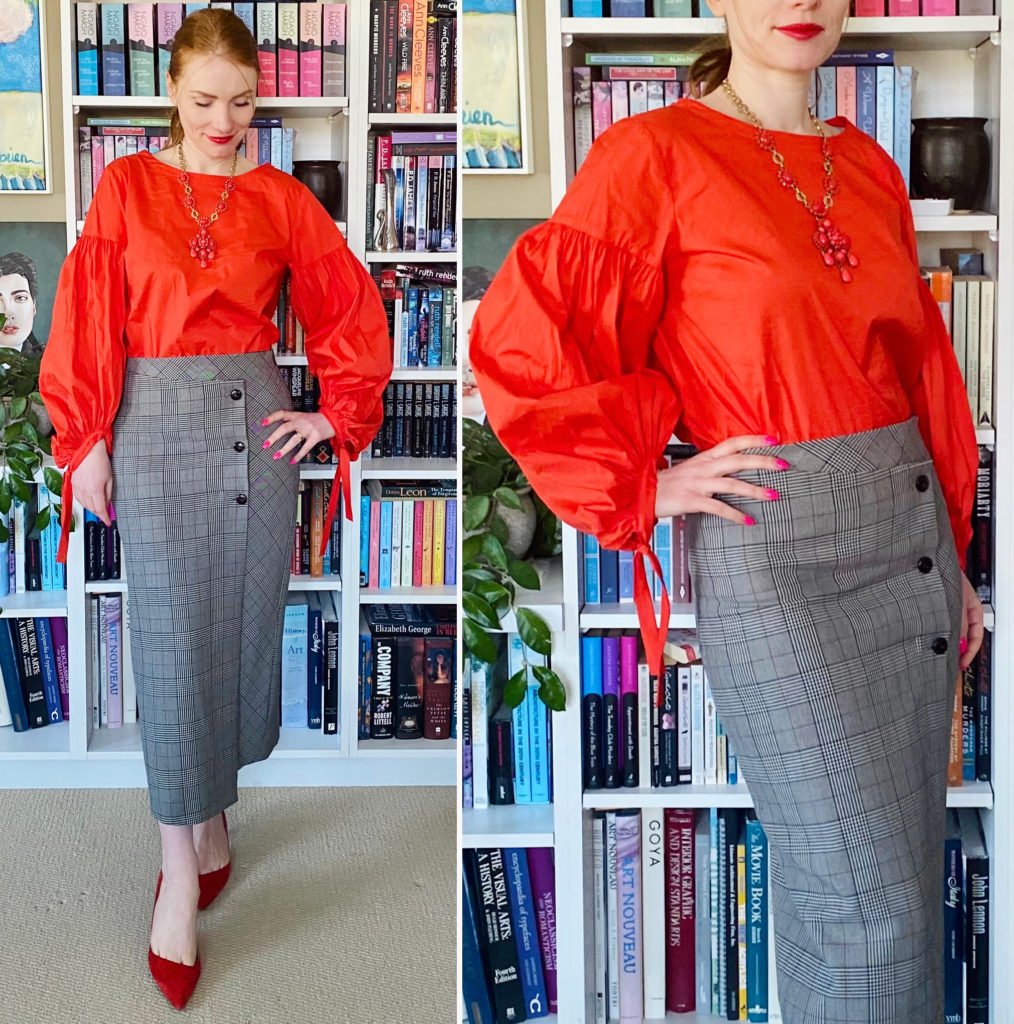
Details: Loft top (thrifted), Babaton skirt (thrifted), Stella & Dot necklace (thrifted), J. Crew shoes (retail)
Thoughts: I don’t often buy Loft pieces because they’re not usually OTT enough for me, hah. This top was an exception because those sleeves are proper dramatic. I hesitated a bit with the colour because orange is still a dicey proposition for me; but it was close enough to my favourite shade of orangey red to be worth the risk. And I think I made the right decision. I love the sleeves and the fabric is very nice also (cotton poplin). I think I will get a good amount of wear out of it, and have fun doing it too.
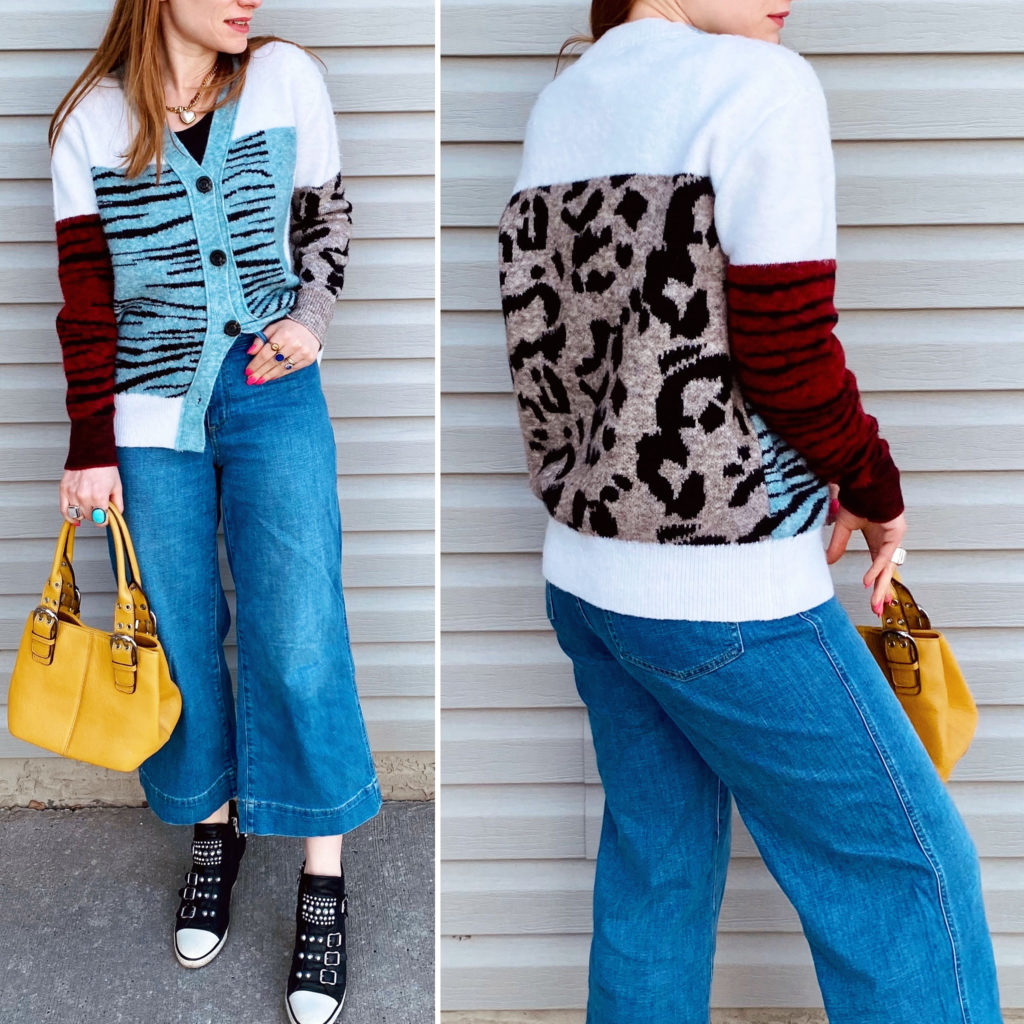
Details: Cloth cardigan (thrifted), Gap jeans (thrifted), Ash shoes (thrifted), Tignanello bag (Poshmark)
Thoughts: Couldn’t walk away from this cardigan, it was weird and funky which is my catnip. Pieces like that do all the heavy lifting in an outfit — you get maximal impact for minimal effort. What’s not to love?
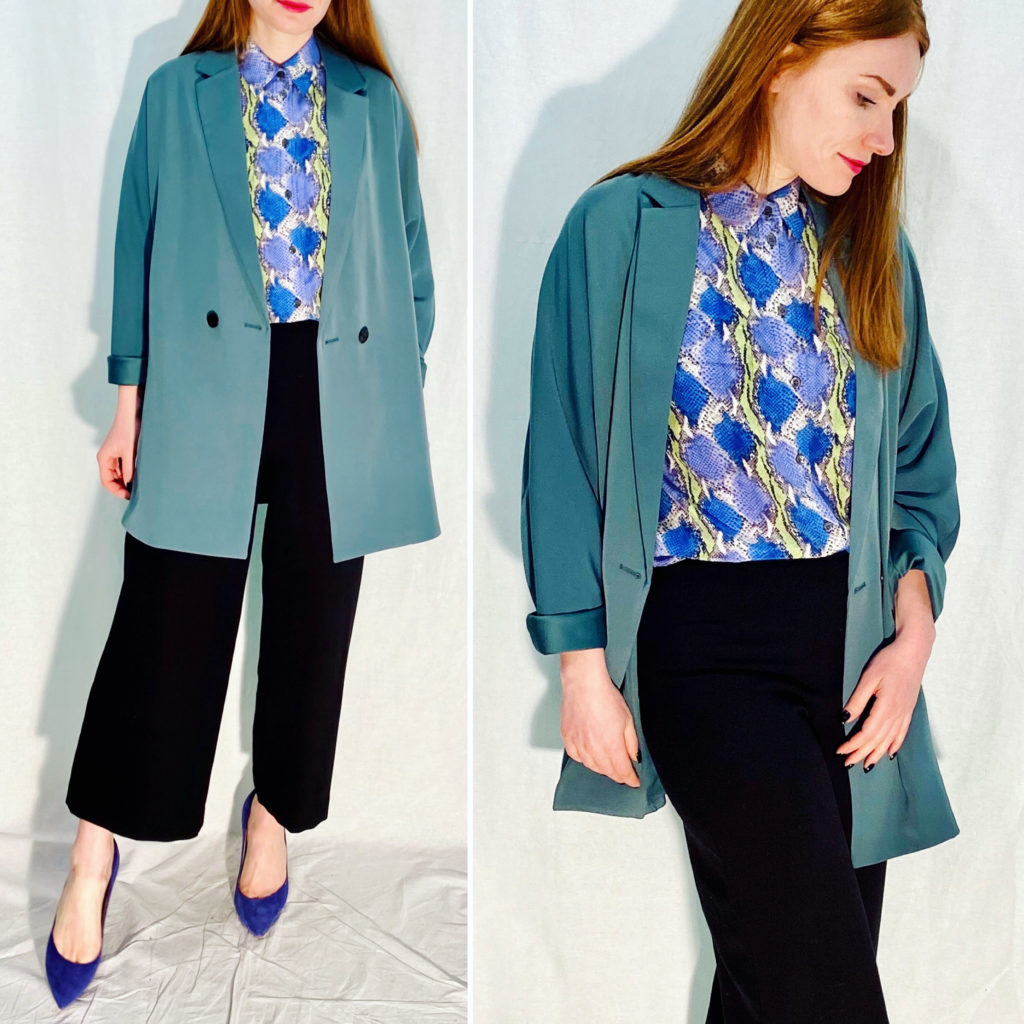
Details: Equipment blouse (thrifted), Icone blazer (thrifted), Kimchi Blue pants (thrifted), J. Crew shoes (thrifted)
Thoughts: I had listed this blouse for sale ages ago, but it sat and sat. So I decided to take it back because it’s getting harder to find nice pieces like this at the thrifts, and a silk blouse is nothing to sneeze at. Plus, the colours work great with my beloved blue-green colour scheme.
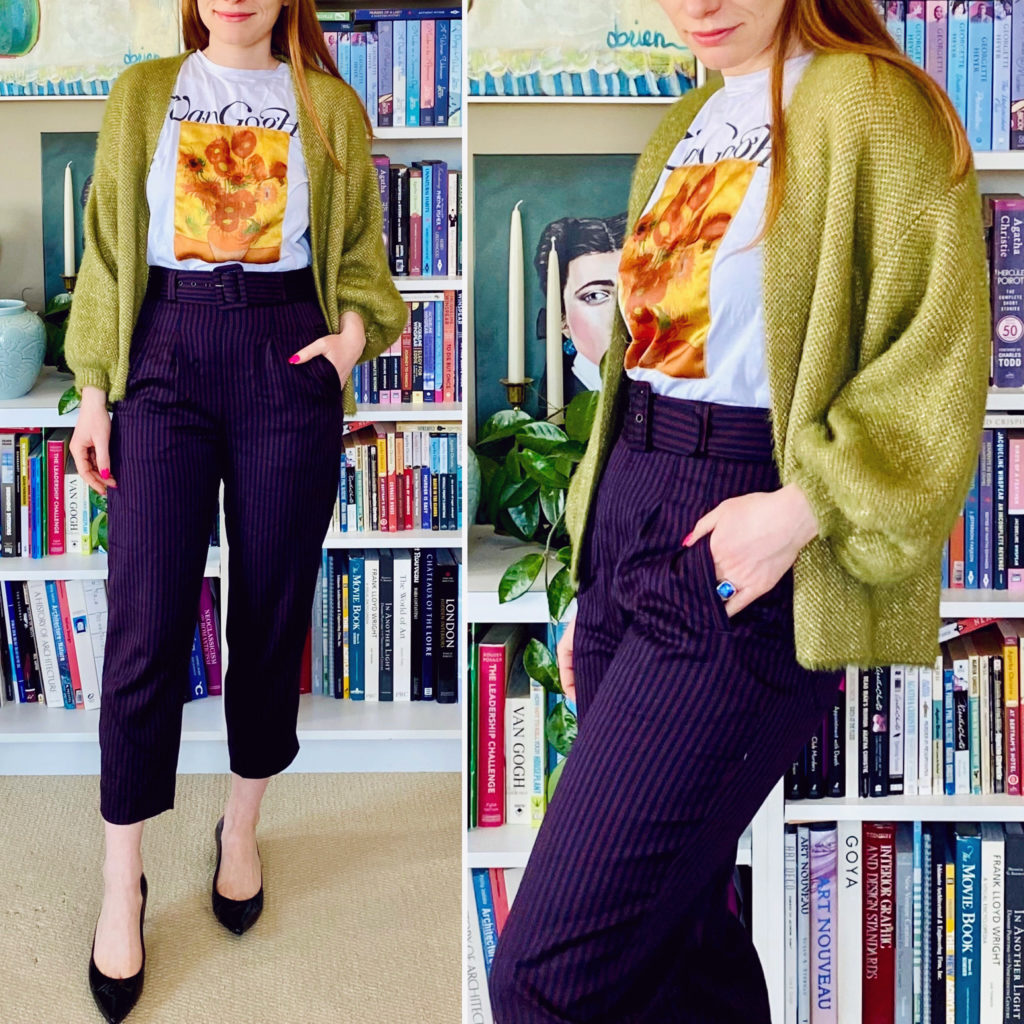
Details: Zara tee (thrifted), Do Everything in Love cardigan (thrifted), Cartonnier pants (thrifted)
Thoughts: You shouldn’t be surprised that I bought this tee — it was too on the nose not to, given that I was working on some Van Gogh-inspired sunflower embroidery at the time. The real revelation here are the pants; I didn’t think I would love them as much as I do. They are a navy-and-burgundy stripe, but read purple in photos. I like the silhouette and the colour. I thought they would be a great pairing for the yellow tee — yellow and purple is an eye-catching combo — and decided at the last minute to add the chartreuse. Good decision, I think.
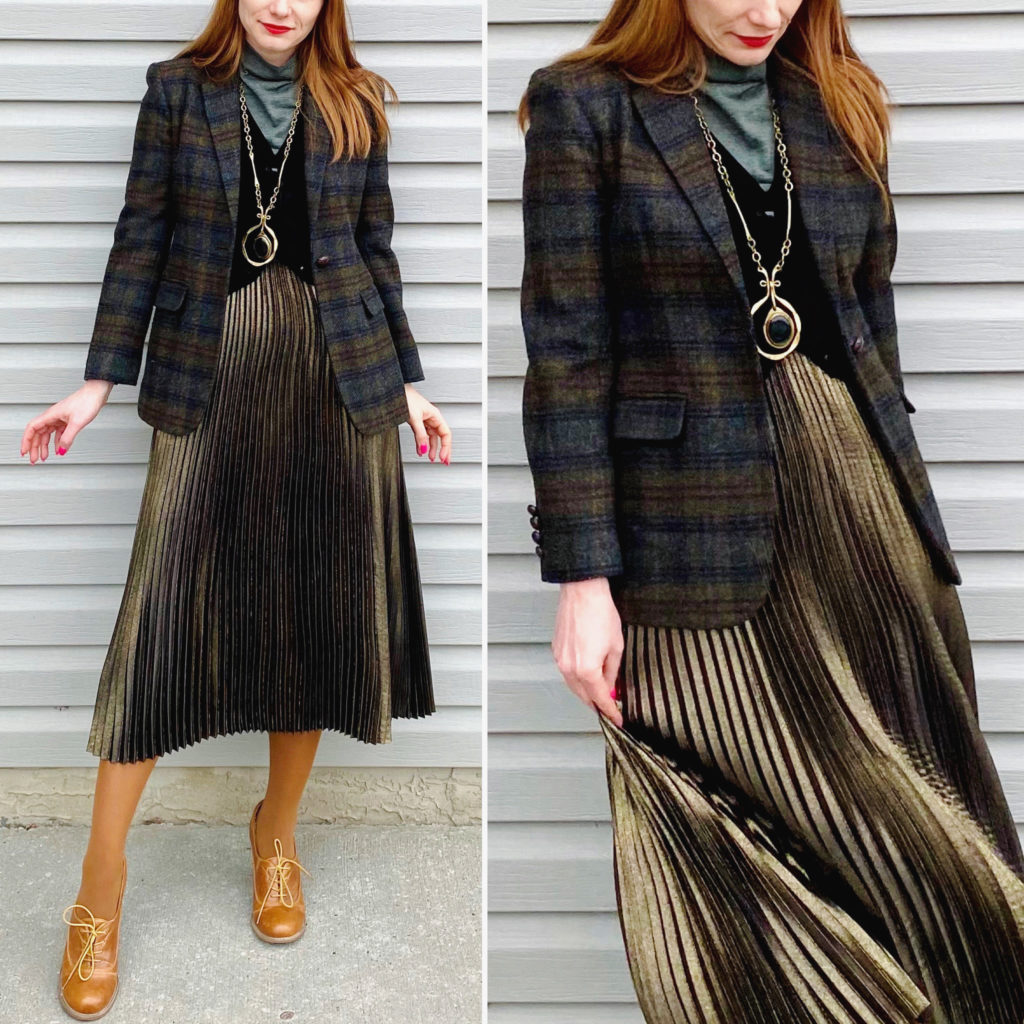
Details: Selected Femme sweater (retail), velvet vest (thrifted), Ralph Lauren blazer (thrifted), Babaton skirt (Poshmark), Rafael Alfandary necklace (ebay), Chelsea Crew shoes (thrifted)
Thoughts: Still loving with this blazer. I’ll have a post coming up soon about my current obsession with vintage Ralph Lauren. I’ve been strongly drawn to the Historian avatar lately, and trying out different outfits using similar formulas.

